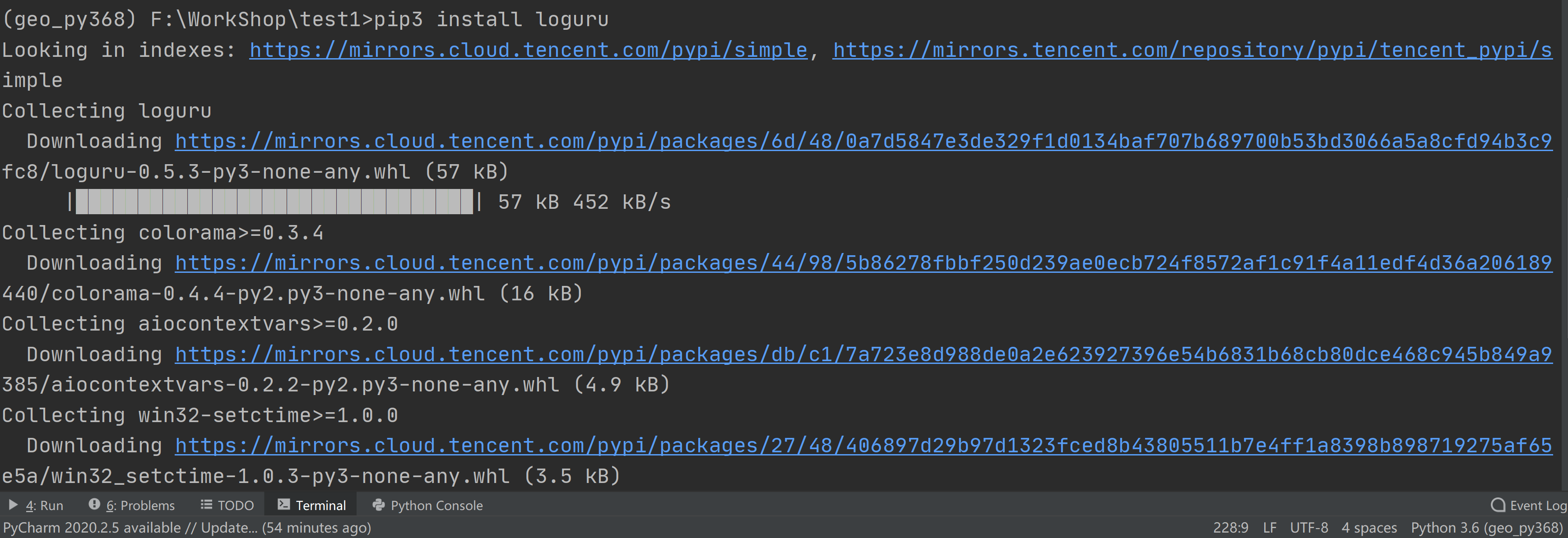Introduction: continuous learning, continuous evolution, get logging new skills
In general, we often use the logging module to record logs. Before using it, we need to configure the template and set the Handler and Formatter to preprocess, such as log output location, output format, log blocking and backup. When using logs in different projects, you need to configure the logger in the early stage. Compared with the new skills of get today, I feel that the configuration is cumbersome.
The new skill is "Delgan/loguru", Loguru is a library which aims to bring enjoyable logging in Python
In this article, we introduce Loguru from four aspects:
1. Different from logging, why is loguru "fragrant"
2. Installation
3. Quick use
4. Introduction to high-order usage
1, Different from logging, why is loguru "fragrant"
logging | loguru | |
|---|---|---|
identical | Provide simple and flexible event recording function | |
Different | You need to explicitly instantiate the logger and use handler, format and filter | Reduce the configuration steps, and the add function rules all |
2, Installation
As the old rule, the first step is to install the library. In the python 3 environment, you can directly install pip3
pip3 install loguru

3, Quick use
After the installation is successful, we can start
from loguru import logger
logger.debug("This is Debug")There is no need for cumbersome configuration, so easy
The main object in loguru is logger. There is only loguru. Why not configure it? That's because these configurations have been pre configured. Output formatting, text color, etc. the console output is as follows:

The output content includes time, level, module name, line number and log information. In addition, the output is color, which will look better
How to customize DIY's personalized log? Let's take a look at the next chapter
4, Introduction to high-order usage
Let's mainly look at the "universal" add() of loguru.logger
def add(
self,
sink,
*,
level=_defaults.LOGURU_LEVEL,
format=_defaults.LOGURU_FORMAT,
filter=_defaults.LOGURU_FILTER,
colorize=_defaults.LOGURU_COLORIZE,
serialize=_defaults.LOGURU_SERIALIZE,
backtrace=_defaults.LOGURU_BACKTRACE,
diagnose=_defaults.LOGURU_DIAGNOSE,
enqueue=_defaults.LOGURU_ENQUEUE,
catch=_defaults.LOGURU_CATCH,
**kwargs
):
passFrom the source code, we can see that there are many add parameters, such as level, format, filter, color, etc. Let's focus on the sink parameter
sink : |file-like object|_, |str|, |Path|, |callable|_, |coroutine function|_ or |Handler|
An object in charge of receiving formatted logging messages and propagating them to an
appropriate endpoint.
(1) Support for file objects
(2) You can pass in one directly str String or pathlib.Path object
(3) It can be a Handler in the logging module
(4) It can be a class or method
Let's try it
(1) Save output log to file
from loguru import logger
logger.add("test_loguru_{time}.log") # Define the file name of the output in add
logger.debug("This is Debug")console output

Output the file to the current project directory

File content

(2) Support log size segmentation and log retention time definition
Create by log size, time (hours, weeks)
rotation : |str|, |int|, |time|, |timedelta| or |callable|_, optional
A condition indicating whenever the current logged file should be closed and a new one
started.
Configure maximum log retention time
retention : |str|, |int|, |timedelta| or |callable|_, optional
A directive filtering old files that should be removed during rotation or end of
program.
from loguru import logger
logger.add("test_loguru_{time}.log", rotation="1MB") # The size of each file is 1MB. More than creating a new file
logger.add("test_loguru_{time}.log", rotation="12:00 ") # Create a new file at 12:00 every day
logger.add("test_loguru_{time}.log", rotation="1 week") # Create new files every week(3) Support log time customization

from loguru import logger
logger.add("test_loguru_{time}.log", format="{time:YYYY-MM-DD A HH:mm:ss.SSSS} | {level} | {name} | {message}",level="DEBUG", rotation="500MB", retention="1 days")
logger.info("This is INFO")
(4) Support code exception tracking
backtrace (bool, optional) – Whether the exception trace formatted should be extended upward, beyond the catching point, to show the full stacktrace which generated the error.
diagnose (bool, optional) – Whether the exception trace should display the variables values to eases the debugging. This should be set to False in production to avoid leaking sensitive data.
1. Set in the add parameter
from loguru import logger
logger.add("test_loguru_{time}.log", format="{time} | {level} | {name} | {message}", level="DEBUG",
rotation="1 KB", retention="10 seconds", encoding="utf-8", backtrace=True, diagnose=True)
def test(num_list):
try:
for num in num_list:
logger.info(f"This Number is " + num)
except Exception as e:
logger.exception(e)
if __name__ == "__main__":
l = [1, 2, 3]
test(num_list=l)console output

Log file content

2. Direct Traceback recording using decorator
from loguru import logger
logger.add("test_loguru_{time}.log", format="{time} | {level} | {name} | {message}", level="DEBUG",
rotation="1 KB", retention="10 seconds", encoding="utf-8")
@logger.catch
def test(num_list):
for num in num_list:
logger.info(f"This Number is " + num)
if __name__ == "__main__":
l = [1, 2, 3]
test(num_list=l)console output

File output

So far, we can see that Loguru is very powerful, with simple application and intuitive debugging and tracking. Of course, it also has many powerful functions. You can go to the official website to learn
reference material:
github: https://github.com/Delgan/loguru
loguru help manual: https://loguru.readthedocs.io/en/stable/index.html